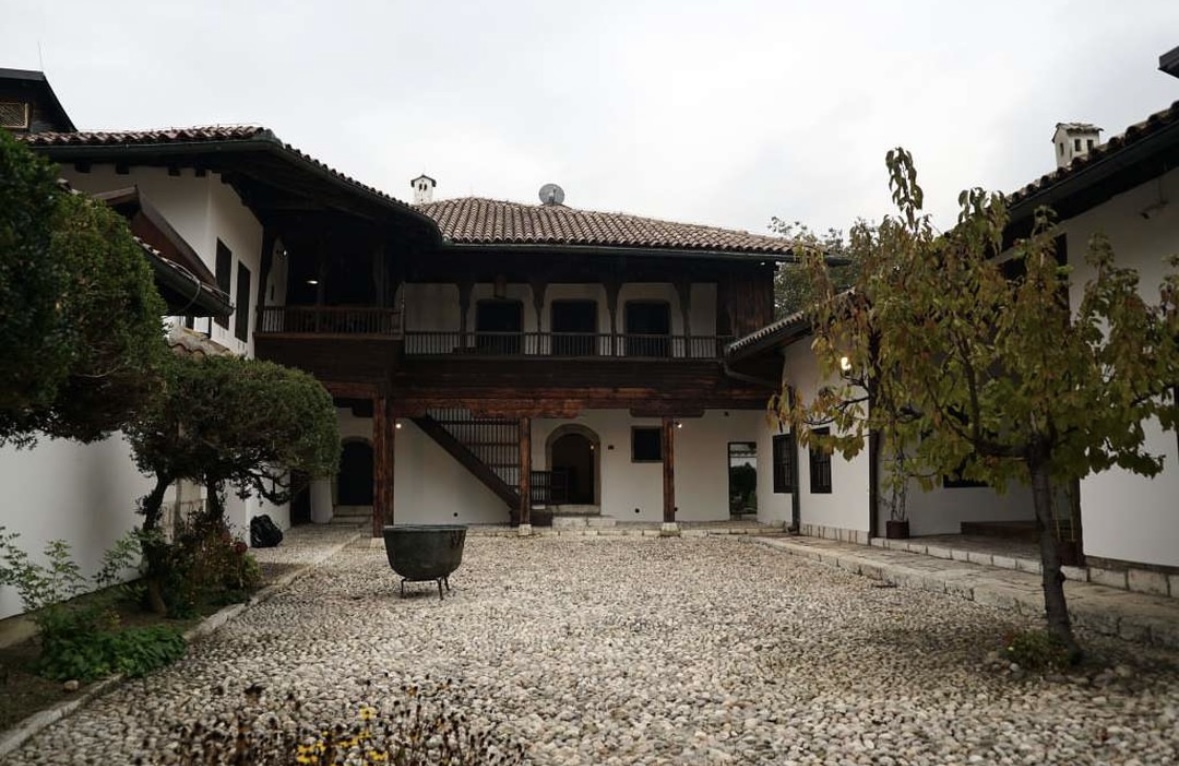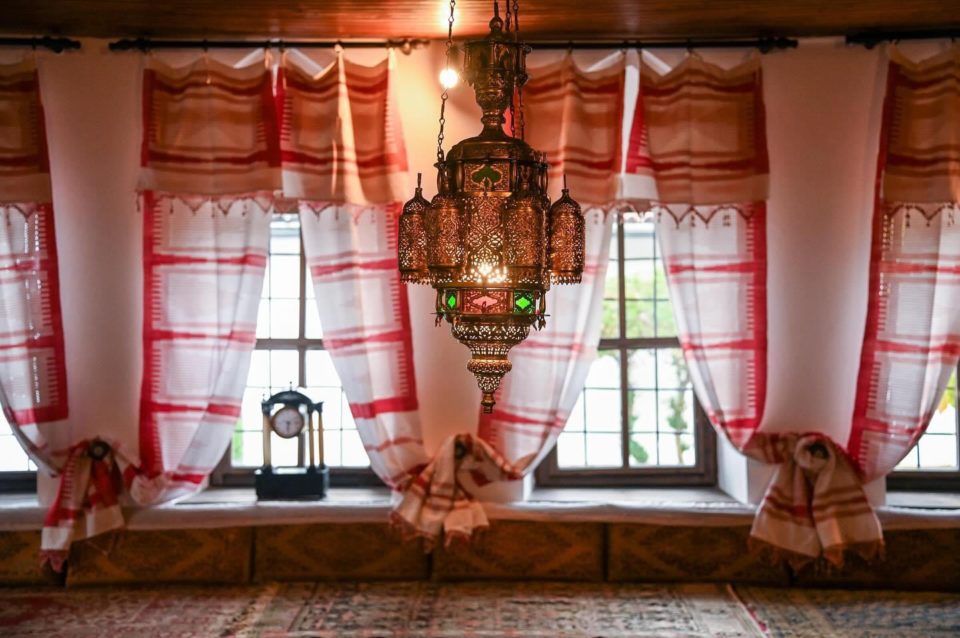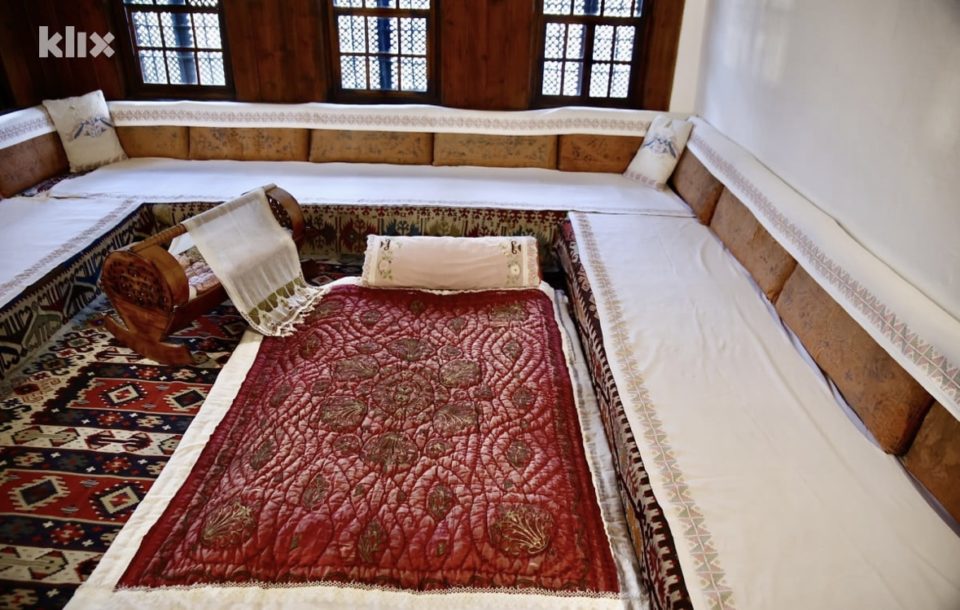
The Svrzo House, located in the heart of Sarajevo’s old quarter, is one of the most beautiful vestiges of Ottoman architecture in the capital of Bosnia and Herzegovina.
This historic building from the 18th century is distinguished by its authentic design, which combines the practicality and elegance of life in that era. Once the home of a prominent Sarajevo family, today it serves as a museum and a reminder of the rich cultural heritage of Bosnia and Herzegovina. The Svrzo House is not only an architectural wonder, but also a window into the past, revealing the details of everyday life in the Ottoman period.
The house was built by the prominent Sarajevo Glođo family, whose most famous member was Munib ef. Glođo, a well-educated qadi descended from an agha and ulema family, a vakif. He built a water supply system from the neighborhood of Sedrenik to the Čurćić Mosque, as well as restored the buildings of Gazi Husrevbeg’s waqf. In addition to these contributions, he was also the leader of a rebellion against the Ottoman authorities. After the family was left without male heirs, the house passed to the distinguished Svrzo family through familial ties.
“Until 1952, the Svrzo House was a private residential building, where the Svrzo family lived. Later, it was sold to the City of Sarajevo, which passed it to the Museum of the City of Sarajevo, so that it could be equipped and opened as a museum. After reconstruction and furnishing, it was opened to the public in 1965,” explained Amra Madžarević, an advisor at the Public Institution Museum of Sarajevo.
She noted that the only change in the house’s social and cultural context over the years was the transformation from a residential space to a museum.

“It was a very important move by the city authorities at the time to turn the house into a museum. Since the family lived in the house, maintained it themselves, and left behind many items that remain an integral part of the space, the Svrzo House stands as one of the best-preserved residential units from the 19th century and earlier in the city,” explained Madžarević.
The Svrzo House is an authentic example of traditional Bosnian architecture, featuring classic elements such as a fountain that was used for cleansing before entering the home. Significant architectural characteristics of the complex include its division into men’s quarters (selamluk) and women’s quarters (haremluk) as well as the open spaces facing the courtyard and garden: the entrance hall (hajat), balconies (kamarija), and docks facing the street. The interior is equipped with wooden tables (minders) and wall-closets (musandarams). Another unique feature is the spa built into the masandara next to the earth oven. Other furniture in the house, such as the dining table (sofra), sleeping mattresses, small stools (peškuni), and charcoal coffee heater (mangal), are movable and can be adjusted as needed.
As Madžarević explained, the Svrzo House is located in a residential part of the city and is one of the few structures preserved in its original form. Like all houses built in that period, it is surrounded by a high wall facing the street, designed to conceal the owners’ wealth externally in the interests of privacy and modesty. “There lies its greatest significance,” emphasized Madžarević.
The house survived the First and Second World Wars, as well as the war in Bosnia and Herzegovina. Although it has endured and been renewed through various socio-political eras, the preservation of this valuable national monument is rife with challenges.

“This is a very old building, built with the materials available at the time—clay bricks, roof tiles, and a lot of wood. Maintenance is very difficult and expensive, given that it is also a national monument. The renovation must preserve the original appearance of the building and at the same time extend its life,” stated Madžarević.
The protection of textiles is particularly challenging, as these are exposed to external elements in the museum. It is up to us, as Madžarević points out, to adequately protect the existing features and constantly search for new authentic examples.
Today, the Svrzo House is one of the most visited museums in Sarajevo and an important tourist destination that presents the city in a special light. In addition, it plays a significant educational role, providing an opportunity for architecture and art students to explore its unique characteristics, while offering creative and educational workshops for younger visitors.
The house also serves as a venue for cultural events such as promotions, concerts and plays, while its outdoor courtyard and garden spaces are available for special events, including weddings and receptions, with strict observance of the conditions for the preservation of the exhibits.






